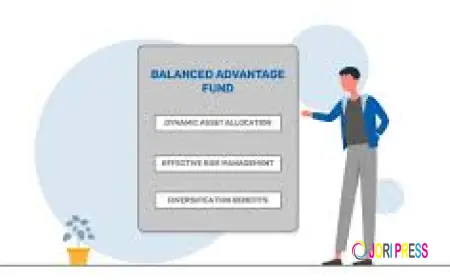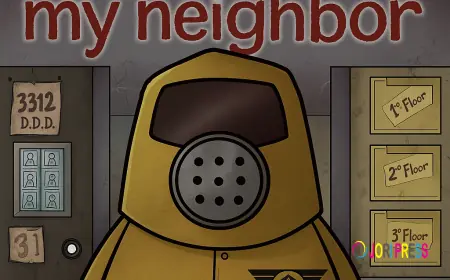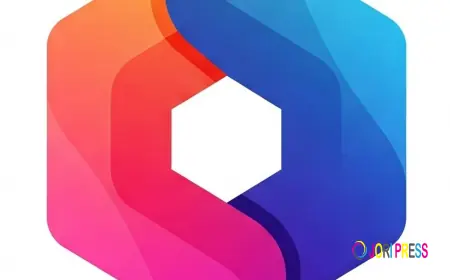ERC-20 Tokens Made Simple: The Foundation of the Ethereum Ecosystem
Discover how ERC-20 tokens power the Ethereum ecosystem and simplify crypto token development for businesses, DeFi, and Web3 applications

In the world of blockchain and cryptocurrency, few concepts have had as much impact as the ERC-20 token standard. It has become the foundation for thousands of digital assets that now drive decentralized finance (DeFi), gaming, governance, and Web3 applications. Understanding ERC-20 tokens is essential for anyone exploring crypto token development or planning to create their own digital currency. This post breaks down what ERC-20 tokens are, how they work, why they matter, and how businesses and developers use them as the base layer for innovation across the Ethereum ecosystem.
Understanding the Ethereum Ecosystem
Ethereum was launched in 2015 as a decentralized platform that allows developers to create and deploy smart contracts. Unlike Bitcoin, which primarily functions as a digital currency, Ethereum was designed to be a global platform for programmable money and decentralized applications. Every application built on Ethereum uses smart contracts—self-executing programs that run without intermediaries.
To support these applications, Ethereum allows developers to create their own tokens. However, without a common set of rules, tokens would be incompatible with one another. Wallets, exchanges, and other services would have to customize support for each new token, creating unnecessary complexity. This challenge led to the creation of ERC-20, a unified token standard that made it possible for all tokens on Ethereum to communicate seamlessly.
What Exactly Is ERC-20?
ERC-20 stands for Ethereum Request for Comment 20. It is a set of rules or guidelines that define how tokens can be created, transferred, and managed on the Ethereum blockchain. Think of ERC-20 as a blueprint that ensures every token built using it can interact consistently with other tokens, wallets, and decentralized apps.
The ERC-20 standard defines a few essential functions—like how to check an account balance, how to transfer tokens from one user to another, and how to approve another account or contract to spend tokens on your behalf. This consistency means that an ERC-20 token created today will automatically work with existing Ethereum tools and infrastructure.
Because of this standardization, the majority of tokens launched on Ethereum follow the ERC-20 format. Whether it’s a governance token for a DeFi project, a utility token for a blockchain-based game, or a stablecoin pegged to a fiat currency, ERC-20 has become the go-to structure for token creation.
The Core Functions of ERC-20 Tokens
Every ERC-20 token smart contract includes a few standard functions that make it compatible with the Ethereum ecosystem. Some of the most important ones are:
-
totalSupply() – Returns the total number of tokens in circulation.
-
balanceOf(address) – Shows the number of tokens owned by a specific address.
-
transfer(address, uint256) – Moves tokens from one address to another.
-
approve(address, uint256) – Authorizes another address (often a smart contract) to spend tokens on behalf of the owner.
-
transferFrom(address, address, uint256) – Executes a transfer from one address to another using the approved spending allowance.
-
allowance(address, address) – Checks how many tokens an approved spender can still use.
These functions might look simple, but they represent the backbone of the modern token economy. They allow users to send and receive tokens safely, enable exchanges to handle automated transactions, and allow developers to build complex decentralized systems around digital assets.
Why ERC-20 Became the Standard
The success of ERC-20 comes from its simplicity, reliability, and interoperability. Before ERC-20, token creation on blockchains was fragmented—each token followed its own custom rules. This made it hard for developers to build wallets, decentralized applications, and exchanges that could handle multiple types of assets.
ERC-20 solved this by introducing a uniform framework. Every token built using the ERC-20 standard behaves in the same predictable way. This uniformity allowed exchanges to list tokens faster and wallets to support them automatically. It also helped create the massive ecosystem of DeFi applications that now handle billions of dollars in transactions every day.
For developers and companies, ERC-20 reduced the barrier to entry for launching digital assets. Instead of building everything from scratch, they could focus on their business logic, token economics, and user experience. A reliable crypto token development process became possible because of this standardization.
The Role of ERC-20 in Crypto Token Development
ERC-20 completely transformed the process of crypto token development. It provided a tested framework that makes creating tokens faster, cheaper, and less risky. Developers no longer need to reinvent the wheel—most of the critical security and operational functions are already built into the standard.
A developer or crypto token development company can now deploy a token in a matter of hours using well-established templates and open-source tools. Once deployed, the token immediately becomes compatible with major wallets like MetaMask and Ledger, and decentralized exchanges like Uniswap. This interoperability dramatically reduces time-to-market for new blockchain projects.
Beyond efficiency, ERC-20 allows for flexibility. Developers can customize token parameters such as total supply, divisibility, and initial distribution. They can also add additional logic on top of the standard—for example, features for automatic burns, staking, or vesting schedules. The framework is open enough to support innovation while maintaining the same core functionality that ensures compatibility.
Real-World Impact of ERC-20 Tokens
ERC-20 tokens have become the backbone of many major sectors in blockchain. They are not limited to one use case. Here are some examples of how ERC-20 tokens drive the broader crypto economy:
-
Stablecoins – Tokens like USDT, USDC, and DAI follow the ERC-20 standard. They maintain value parity with traditional currencies and are crucial for trading and DeFi liquidity.
-
DeFi Governance Tokens – Projects such as Uniswap (UNI), Aave (AAVE), and Compound (COMP) use ERC-20 tokens to represent voting power and distribute rewards.
-
Utility Tokens – Many blockchain-based platforms issue ERC-20 tokens to give users access to their services, such as paying for gas fees or using premium features.
-
Security Tokens – Some companies issue ERC-20 tokens that represent ownership in real-world assets, such as shares or property.
-
Gaming and NFTs – While NFTs use a different standard (ERC-721 or ERC-1155), many gaming economies still use ERC-20 tokens for in-game currencies and rewards.
This versatility demonstrates how ERC-20 became more than just a technical rule—it evolved into the economic infrastructure for Web3.
How a Crypto Token Development Company Works with ERC-20
For businesses and startups looking to launch their own tokens, working with a professional crypto token development company can make a major difference. These companies specialize in building and deploying tokens that comply with ERC-20 and other Ethereum standards.
A development company will usually start by analyzing the client’s goals—whether they want to launch a governance token, a stablecoin, or a reward system. Then, they design the tokenomics (the economic structure of the token), draft the smart contract, and perform testing before deployment.
The process includes:
-
Creating the ERC-20 contract code.
-
Deploying the contract on Ethereum’s test network for trial runs.
-
Conducting security audits to prevent vulnerabilities.
-
Launching the token on the main network.
-
Integrating the token with wallets and exchanges.
Because the ERC-20 standard is open and widely supported, even smaller teams can use it effectively. However, professional developers ensure that the token’s logic is secure and optimized. Mistakes in smart contract code can lead to permanent losses, so experienced development firms help businesses avoid costly errors.
ERC-20 and the Growth of DeFi
The decentralized finance ecosystem, or DeFi, owes much of its growth to ERC-20 tokens. These tokens serve as the core assets for lending platforms, yield farms, liquidity pools, and decentralized exchanges. For instance, when users deposit ERC-20 tokens into a liquidity pool, smart contracts automatically issue liquidity provider (LP) tokens that also follow the ERC-20 standard. This layered design creates endless possibilities for composability—where different protocols can interact and build upon one another without friction.
DeFi’s explosive growth can be attributed to the reliability and predictability of ERC-20. Every protocol knows exactly how these tokens behave, which makes it easier to integrate them into financial systems without needing custom code for each new asset. As a result, the ERC-20 framework has become the foundation upon which most DeFi innovation is built.
Limitations of ERC-20
Despite its success, ERC-20 isn’t perfect. One known limitation is the issue of transaction approval. When a user wants a smart contract to transfer their tokens, they must first approve it and then call the transfer function—this requires two separate transactions and fees.
Another issue is that ERC-20 tokens can’t directly handle certain advanced use cases, such as NFTs or multi-asset management. Newer standards like ERC-777 and ERC-1155 were created to address some of these limitations. However, even with these improvements, ERC-20 remains the most widely adopted and supported token standard across the Ethereum ecosystem.
Network congestion and high gas fees on Ethereum also pose challenges. Since ERC-20 tokens depend on Ethereum’s network, heavy traffic can make token transactions expensive. This has encouraged developers to explore layer-2 solutions and sidechains that offer cheaper and faster transfers while maintaining ERC-20 compatibility.
Security and Auditing in ERC-20 Development
Security is one of the most critical aspects of ERC-20 token creation. Even minor mistakes in the smart contract can lead to exploits or permanent token loss. That’s why thorough testing and auditing are essential steps in crypto token development.
Before launching any ERC-20 token, developers test it on Ethereum’s test networks to ensure it functions as expected. They also conduct code reviews and use auditing tools to identify potential vulnerabilities. Professional auditors check for common issues such as integer overflow, reentrancy attacks, and improper access control.
A reliable crypto token development company includes these audits as part of its process, ensuring that the deployed contract is safe for public use. This not only protects investors but also strengthens the credibility of the project.
The Future of ERC-20 in Web3
The ERC-20 standard has evolved alongside Ethereum itself. As the blockchain ecosystem moves toward scalability and sustainability with upgrades like Ethereum 2.0 and layer-2 networks, ERC-20 tokens continue to play a central role.
New platforms such as Polygon, Arbitrum, and Optimism have expanded Ethereum’s capabilities, allowing ERC-20 tokens to move across chains with lower fees and higher transaction speeds. Cross-chain bridges now let users transfer ERC-20 tokens to other networks, promoting greater interoperability across the crypto space.
Looking ahead, ERC-20 tokens are expected to remain fundamental to Web3 infrastructure. They represent a universal format for digital value—something that can be easily integrated into decentralized applications, DAOs, and blockchain-based business models. As adoption grows, more companies are exploring crypto token development to create assets for loyalty programs, digital payments, or governance mechanisms.
Why ERC-20 Still Matters
Despite the rise of new token standards and alternative blockchains, ERC-20 maintains its dominance because of trust, compatibility, and ease of use. It has been battle-tested through years of real-world deployment, handling billions of transactions across thousands of projects.
For developers, it provides a proven structure that minimizes risk. For users, it guarantees a consistent experience across wallets and exchanges. For businesses, it offers an efficient path to enter the blockchain market through partnerships with a crypto token development company.
The standardization ERC-20 introduced continues to influence new blockchain protocols, inspiring similar frameworks on other chains like Binance Smart Chain’s BEP-20 and Avalanche’s ARC-20. These offshoots exist because the ERC-20 model works—it balances simplicity with functionality in a way that has stood the test of time.
Conclusion
ERC-20 tokens are more than just lines of code—they are the foundation of the modern Ethereum economy. From powering DeFi and stablecoins to enabling governance systems and digital payments, ERC-20 defines how value is represented and transferred in a decentralized environment.
Its success lies in standardization and accessibility. Developers can create tokens with minimal friction, users can interact with them seamlessly, and businesses can build entire ecosystems around them. Whether you are a startup entering blockchain or an enterprise exploring digital asset issuance, ERC-20 provides the framework you need.
Working with an experienced crypto token development company ensures that your token meets industry standards, is secure, and functions reliably within the Ethereum network. As blockchain technology continues to evolve, ERC-20 remains a cornerstone—simple in concept, powerful in impact, and essential to the ongoing growth of decentralized innovation.
What's Your Reaction?
 Like
0
Like
0
 Dislike
0
Dislike
0
 Love
0
Love
0
 Funny
0
Funny
0
 Angry
0
Angry
0
 Sad
0
Sad
0
 Wow
0
Wow
0















































